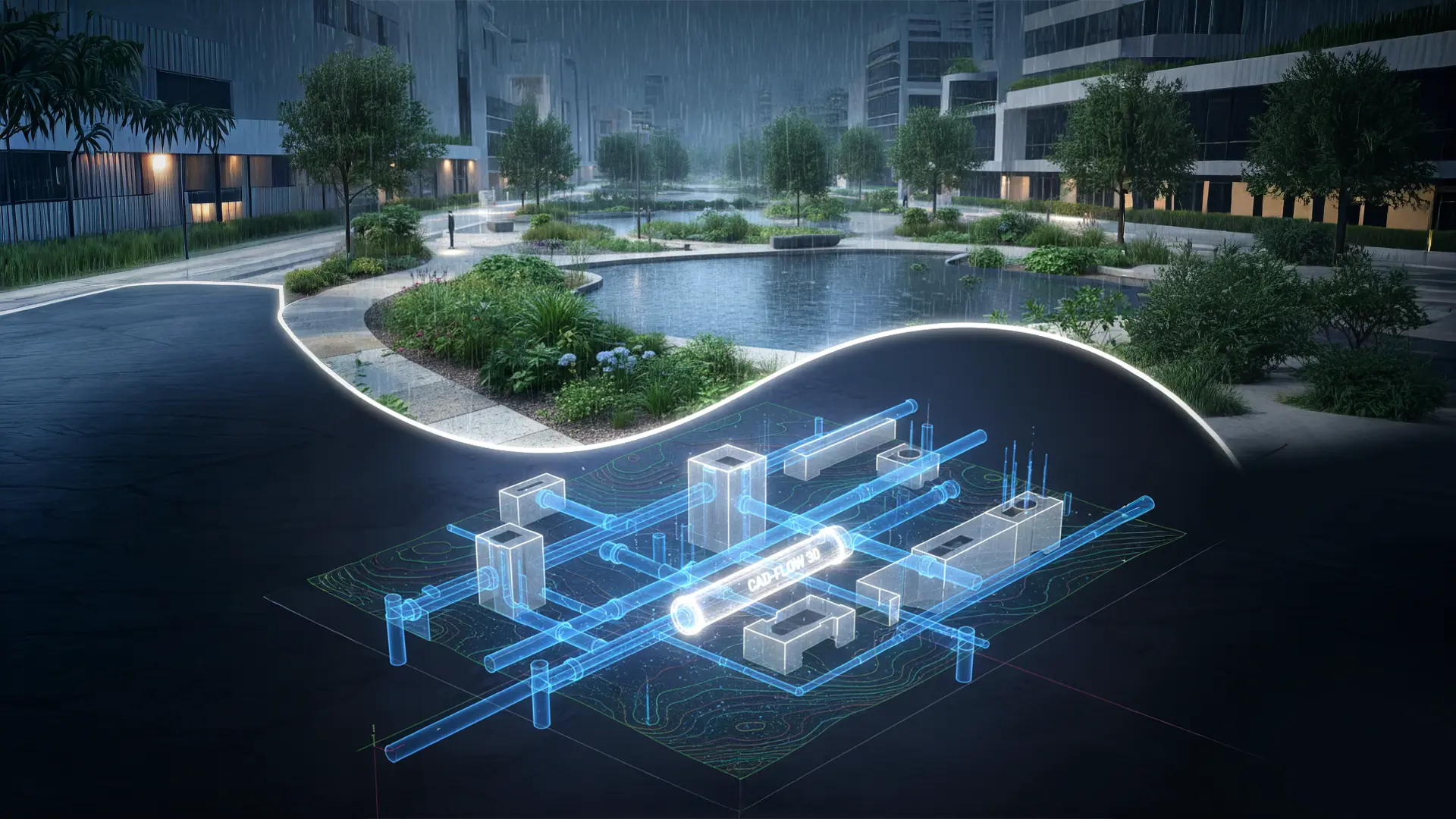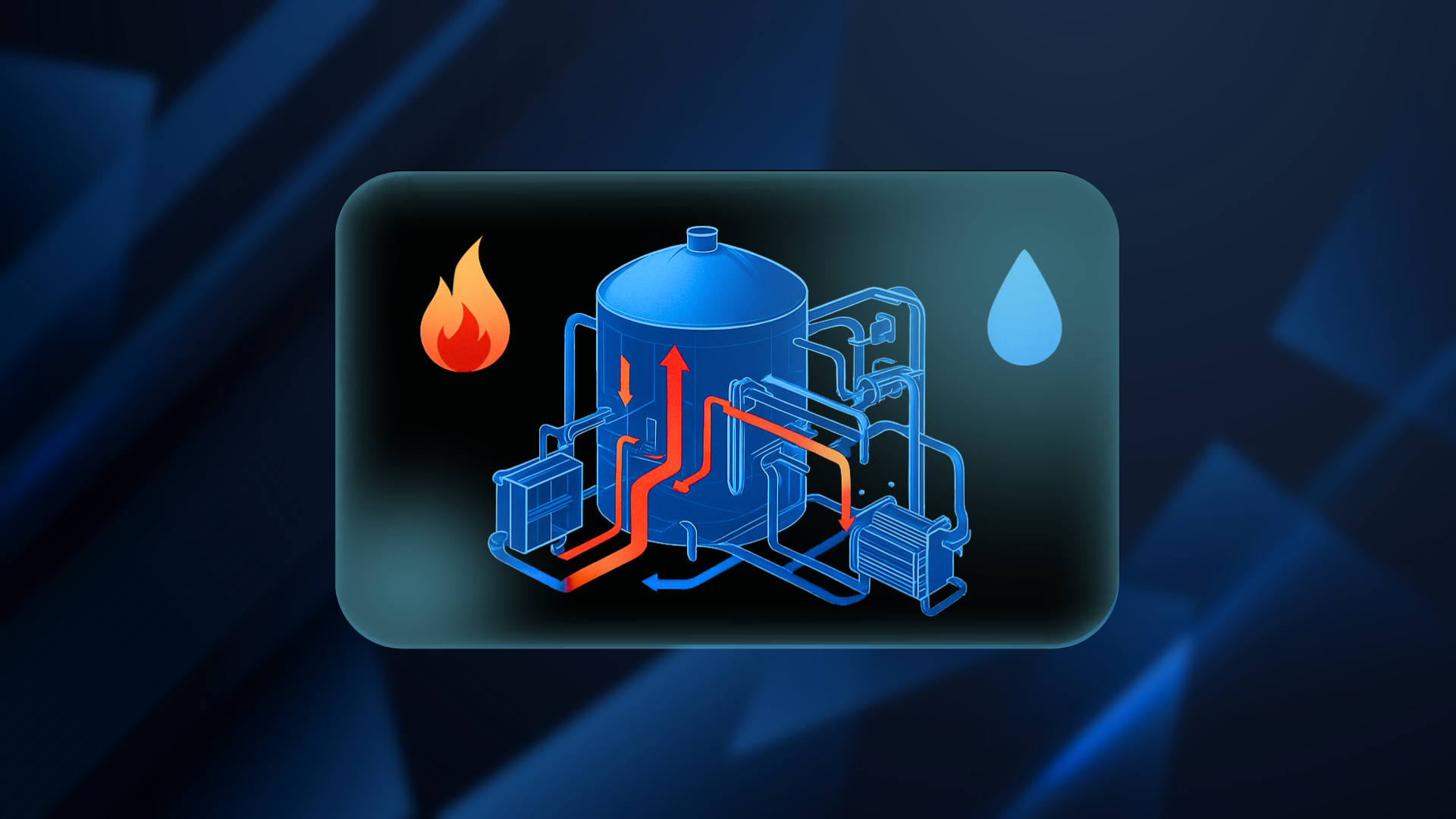Is CAD the Secret to Smarter Energy and Water Systems?
The simple answer: Yes! Let’s go deep.
Picture this: your city faces a power outage, water shortage, and soaring energy demands, all in the same week. How do we keep the lights on, taps flowing, and life moving forward? The answer lies in a powerful tool already in the hands of engineers. Far beyond 2D schematics, today’s CAD platforms empower designers to simulate, integrate, and optimize both energy and water systems in a single digital environment. As cities strive for sustainability and smart infrastructure, CAD is revolutionizing how we plan, build, and manage interconnected utility grids.
This blog explores how CAD is not just shaping infrastructure, but also shaping the future of how we live.
What Are Integrated Energy and Water Grids?
Integrated Energy and Water Grids are advanced infrastructure systems that combine the planning, operation, and management of energy and water networks into a unified, interoperable framework. Rather than treating these utilities as separate entities, integration enables real-time coordination, improved efficiency, and resilience against disruptions.
For example, energy systems (like solar panels or power grids) can be linked with water systems (like irrigation networks or wastewater treatment plants) to optimize energy use in water processes or even recover energy from water treatment facilities. With the help of digital tools such as CAD, SCADA, IoT, and GIS, these grids can be modeled, monitored, and controlled more intelligently. This convergence is essential in the face of climate change, urban growth, and limited resources, where both water and energy security must be managed holistically.
Enhancing Design Precision and Efficiency in Water Distribution Networks
Designing water distribution networks requires balancing efficiency, cost, and reliability. With Computer-Aided Design (CAD), engineers can now model and simulate systems with high precision. When combined with BIM and hydraulic analysis tools, CAD enables detailed 3D layouts and real-time pressure and flow simulations.
This helps detect inefficiencies and prevent costly rework before construction. CAD also improves cross-disciplinary collaboration, ensuring all stakeholders are aligned. Ultimately, CAD empowers utilities to optimize future-proof water systems through smart, data-driven design.
Integration of Smart Technologies and Advanced Analytics
The future of water and energy infrastructure lies in smart technologies and advanced analytics, and CAD plays a key role in enabling their integration. By embedding IoT sensors, SCADA systems, and AI-driven analytics into CAD models, engineers can design networks that don’t just function but think.
Smart technologies enable real-time monitoring of flow, pressure, energy use, and system health. When combined with CAD-based simulations, these inputs allow for predictive maintenance, automated control, and optimization of system performance under varying demand and environmental conditions.
With this integration, design shifts from static layouts to intelligent, adaptive systems transforming how utilities manage water and energy distribution in an interconnected world.
Combining CAD with Geographic Information Systems (GIS) and Building Information Modeling (BIM)
The integration of CAD with GIS and BIM is transforming how infrastructure projects are designed, analyzed, and managed. While CAD excels in precision engineering and component-level design, GIS brings spatial intelligence: mapping terrain, environmental factors, and utility networks across large areas. BIM, on the other hand, adds layers of construction sequencing, asset data, and lifecycle insights. Together, these tools create a unified digital ecosystem where engineers can visualize water and energy grids in both detail and context. For example, a water distribution system can be designed in CAD, located using GIS terrain data, and managed through BIM for long-term maintenance.
This synergy enables smarter decision-making, reduces design conflicts, and ensures projects are more sustainable and cost-effective from concept to operation.
Optimizing Energy Use and Sustainability in Grid Infrastructure
As the demand for cleaner and more efficient infrastructure grows, CAD is playing a vital role in optimizing energy use and promoting sustainability across integrated energy and water grids. Through detailed simulations and energy flow modeling, CAD enables engineers to evaluate design alternatives, select low-impact materials, and reduce energy consumption from the earliest design stages. When integrated with renewable energy systems, such as solar or wind, CAD helps map optimal layouts, align system components, and simulate real-world performance under various environmental conditions. This not only improves operational efficiency but also reduces carbon footprints and supports long-term climate goals.
Facilitating Collaborative and Cloud-Based Design Workflows
Future trends highlight the rise of cloud-based CAD platforms that allow for real-time collaboration, simplification of workflows, and automatic version control—critical for managing complex integrated grid projects involving multidisciplinary teams. These platforms support remote access and enhance data sharing, facilitating faster, more accurate design iterations and decision-making processes.
Challenges and Future Directions
Interoperability Between Systems
Despite progress, seamless integration between CAD, BIM, GIS, and real-time monitoring platforms remains a challenge. Disparate file formats and software ecosystems can hinder data exchange and collaboration, especially in large-scale infrastructure projects.
High Initial Investment and Skill Gaps
Adopting advanced CAD and simulation tools often involves significant upfront costs, both in software and workforce training. Many public utilities and small engineering firms face technical skill gaps in using advanced modeling, automation, and analytics tools effectively.
Data Management and Cybersecurity
As grids become more connected and data-rich, managing large volumes of design, operational, and sensor data becomes complex. Additionally, securing this information from cyber threats is an emerging concern, especially in critical infrastructure systems.
Digital Twins and Lifecycle Integration
The future of CAD lies in real-time digital twin virtual replicas of physical assets that continuously update using sensor data. This will enable full lifecycle management, from design and construction to maintenance and system upgrades.
Computer-Aided Design (CAD) redefines how integrated energy and water grids are planned and built, enabling engineers to simulate layouts, test performance, and streamline development with greater accuracy and efficiency. At CAD Connect, we offer a full range of services including 2D drafting, 3D modeling, FEA, to ensure every grid system is designed for sustainability, reliability, and long-term performance. Partner with us to bring smarter, future-ready infrastructure to life.



